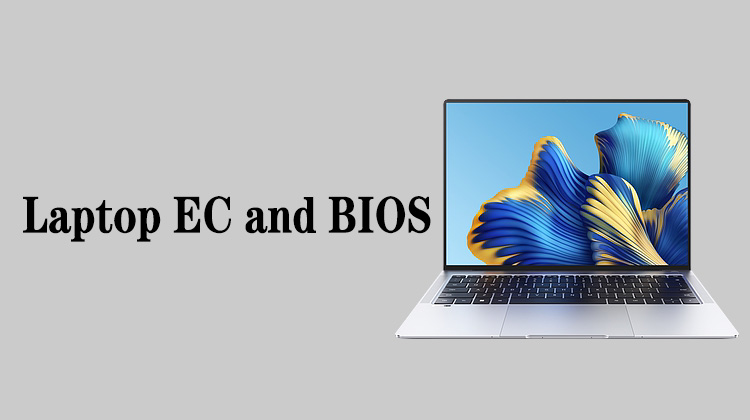1
00:00:00,333 --> 00:00:05,933
Hello everyone, today we are going to learn about EC standby conditions for ordinary laptops
2
00:00:08,233 --> 00:00:14,666
This lesson is divided into two parts: introduction to EC and standby conditions of EC
3
00:00:18,500 --> 00:00:21,100
EC is also called embedded controller,
4
00:00:22,366 --> 00:00:24,766
it is a single chip microcomputer
5
00:00:26,633 --> 00:00:31,700
Architecturally, laptop EC and desktop IO are in the same place
6
00:00:32,900 --> 00:00:35,233
But EC is more powerful than IO
7
00:00:45,900 --> 00:00:53,133
In the standby state, the EC monitors the battery level, manages the battery charge and discharge,
8
00:00:53,266 --> 00:00:57,133
and power indicators, and waits for the user to power on
9
00:01:01,533 --> 00:01:09,533
After it is turned on, it also monitors the temperature information of the system, controls the speed of the fan,
10
00:01:10,700 --> 00:01:17,466
controls the keyboard and touchpad, controls the power supply of the system, and controls the hibernation state
11
00:01:19,133 --> 00:01:21,400
EC manages a lot of things
12
00:01:25,900 --> 00:01:33,433
The EC is referred to as KBC in some circuit diagrams because it contains a keyboard controller
13
00:01:36,233 --> 00:01:41,000
Common EC package modes include BGA package and QFP package
14
00:01:44,633 --> 00:01:49,133
And some EC are special, such as the one with Lenovo logo,
15
00:01:52,866 --> 00:01:56,633
it is special for Lenovo, can not be replaced at will
16
00:01:58,666 --> 00:02:00,533
EC model identification
17
00:02:01,133 --> 00:02:03,000
Read the first line of the EC
18
00:02:04,533 --> 00:02:10,700
For example, this NPCE285UA0DX, it is the model
19
00:02:12,300 --> 00:02:15,800
When we replace, we need to replace the same model
20
00:02:18,000 --> 00:02:25,066
If you encounter a dedicated EC, you can replace it not only on the same laptop but also on the same model
21
00:02:26,466 --> 00:02:28,433
EC standby conditions
22
00:02:29,100 --> 00:02:37,300
EC standby conditions include standby power supply, standby clock, standby reset and program
23
00:02:38,600 --> 00:02:41,766
The standby power supply is usually 3.3V,
24
00:02:42,133 --> 00:02:44,700
and the common names in the circuit diagram are:
25
00:02:44,700 --> 00:02:51,700
VCC0, VCC1, AVCC, VCCA, VSTBY, etc
26
00:02:54,133 --> 00:02:59,900
Standby clock is usually provided by 32.768KHz crystal oscillator,
27
00:03:01,200 --> 00:03:03,733
there are also some EC built-in clock
28
00:03:04,200 --> 00:03:06,300
Let's take a look at the standby reset
29
00:03:07,433 --> 00:03:12,366
The standby reset is generated by the standby power supply through the resistor, capacitor,
30
00:03:12,633 --> 00:03:16,766
or other circuit delay, and the voltage is 3.3V
31
00:03:17,800 --> 00:03:26,733
Common EC reset names are ECRST#, WRST#, VCC_POR#, or VCC1_PWRGD
32
00:03:31,666 --> 00:03:33,966
Some ECs are reset internally
33
00:03:39,133 --> 00:03:41,500
There are two kinds of EC programs
34
00:03:44,066 --> 00:03:48,333
One exists inside the EC, which we call the EC firmware
35
00:03:49,466 --> 00:03:54,800
One is in the BIOS chip underneath the EC, which we call the EC ROM
36
00:03:58,433 --> 00:04:03,166
After the EC meets the requirements of power supply, clock, and reset,
37
00:04:03,700 --> 00:04:08,600
it needs to read the program and configure its GPIO pin to work properly
38
00:04:09,033 --> 00:04:12,333
How do you know if an EC comes with its own program?
39
00:04:13,533 --> 00:04:16,100
We can look at the following four architectures
40
00:04:16,833 --> 00:04:23,200
First of all, there is a BIOS chip next to the EC, which communicates through the SPI bus
41
00:04:23,566 --> 00:04:27,800
In this architecture, there is usually no program inside the EC
42
00:04:30,400 --> 00:04:34,466
Second architecture, there is no BIOS chip next to the EC,
43
00:04:35,933 --> 00:04:40,700
and a BIOS is connected under the PCH through the SPI bus
44
00:04:41,133 --> 00:04:45,433
In this architecture, the EC usually has its own program
45
00:04:46,500 --> 00:04:53,533
The third architecture, PCH and EC connect a BIOS and EC ROM via SPI bus, respectively
46
00:04:58,666 --> 00:05:03,266
In this architecture, there is usually no program inside the EC
47
00:05:04,200 --> 00:05:11,400
The fourth architecture, the EC and the PCH share the same BIOS chip through the SPI bus
48
00:05:11,900 --> 00:05:16,100
In this architecture, there is usually no program inside the EC
49
00:05:20,600 --> 00:05:28,733
However, a small number of EC will carry a part of the program inside, outside also hang a part of the program
50
00:05:29,733 --> 00:05:32,566
So this architecture is the most troublesome
51
00:05:35,333 --> 00:05:38,333
Okay, so that's the standby condition of the EC







